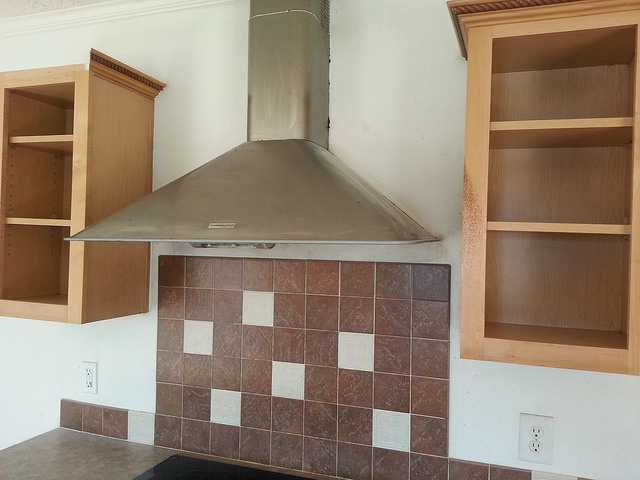
The hood over your stove plays an important role in keeping your kitchen free of smoke and grease. It’s easy to forget about where all that steam from hundreds of homemade meals ends up. Without proper care, vents can become clogged, releasing all that oil and smoke onto your kitchen walls. By cleaning your hoods weekly and your filters monthly, you’ll save yourself from a greasy disaster down the road.
Preparation
It may seem obvious, but make sure the fan, light and stove are completely off before starting. Cleaning your vent can send grime cascading down onto your stove top. To avoid making another mess, you might want to cover your stove in newspaper. If you have a gas stove, be sure to turn off the gas and extinguish the pilot light. For an electric stove, simply detach the coils before starting.
Cleaning the Exterior
The most obvious part of your kitchen hood is the exterior panel. If your hood is a polished metal, be sure to use a cotton rag or damp cloth so you don’t leave scratches. Dish soap is made to cut through grease and works perfectly with hot water. Wipe the hood down and remove the streaks with a dry cloth to finish. If months of grim are really caked on there, you can use a 50/50 mix of ammonia and water. Rub firmly with a non-abrasive sponge. Be sure to wear gloves and work in a well ventilated area when cleaning with ammonia.
Cleaning the Vent
Inside your kitchen hood, a small fan works to whisk all that oil, gas and grease up into a filter. These are different from your common air filter. They are usually made of a metal wire mesh. If your filter is charcoal based, it cannot be cleaned and will need replacing.
The longer grease sits in that filter, the more solidified it becomes. Luckily, they’re quite easy to clean. First, fill your sink or bucket with hot, soapy water. Again, everyday dish soap works perfectly. Remove the filter from the hood, and let it soak for 30 minutes. Be careful when removing the filter, there may be exposed wiring for the light or fan. If the gunk has solidified or is really stuck in there, use a brush to push it through the holes. If you need some extra cleaning power, you can add a ¼ cup baking soda to the mixture. Once grease free, let it dry completely before returning it to the hood. A wet filter is less likely to catch airborne particles and may develop mold.



